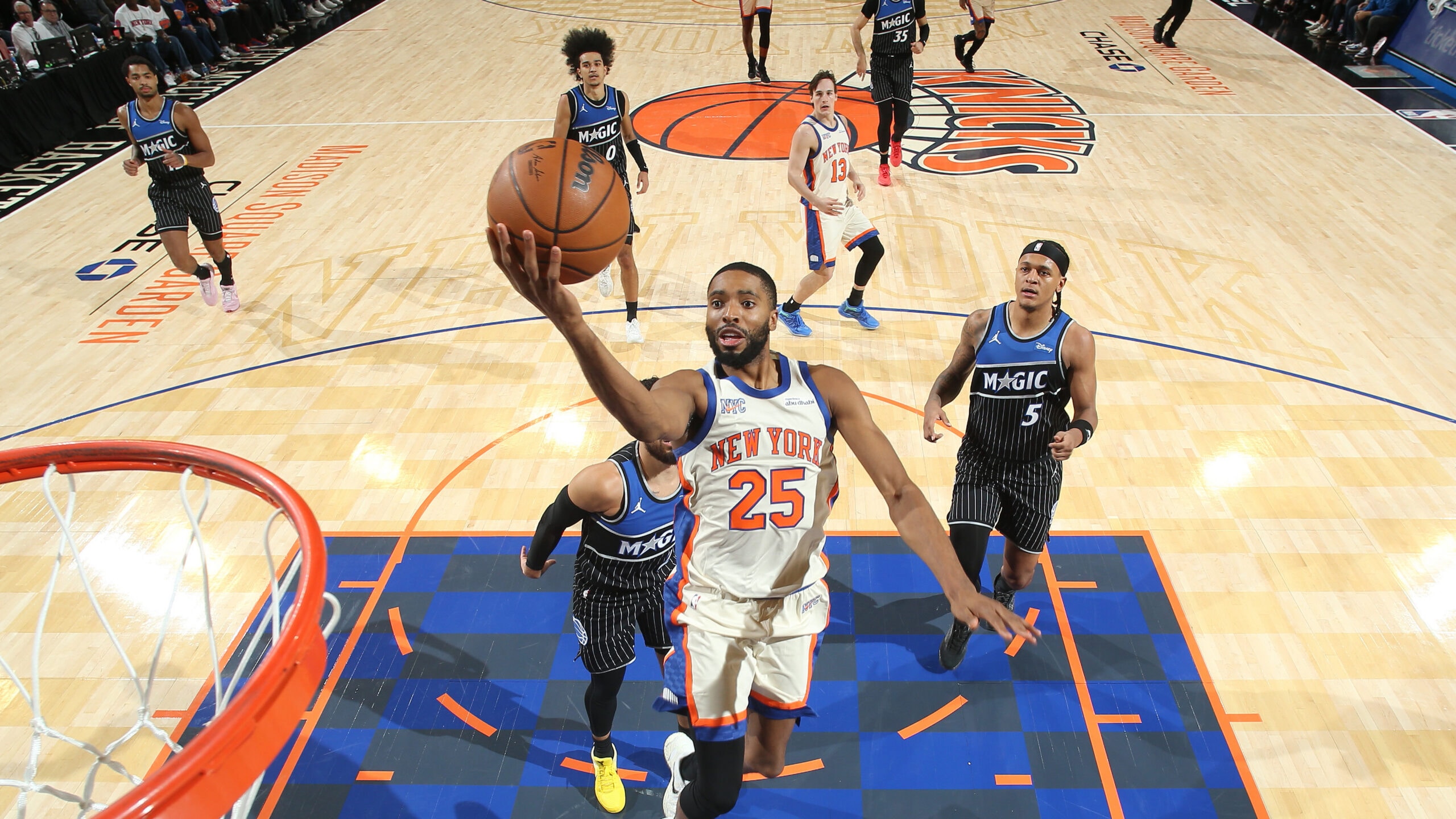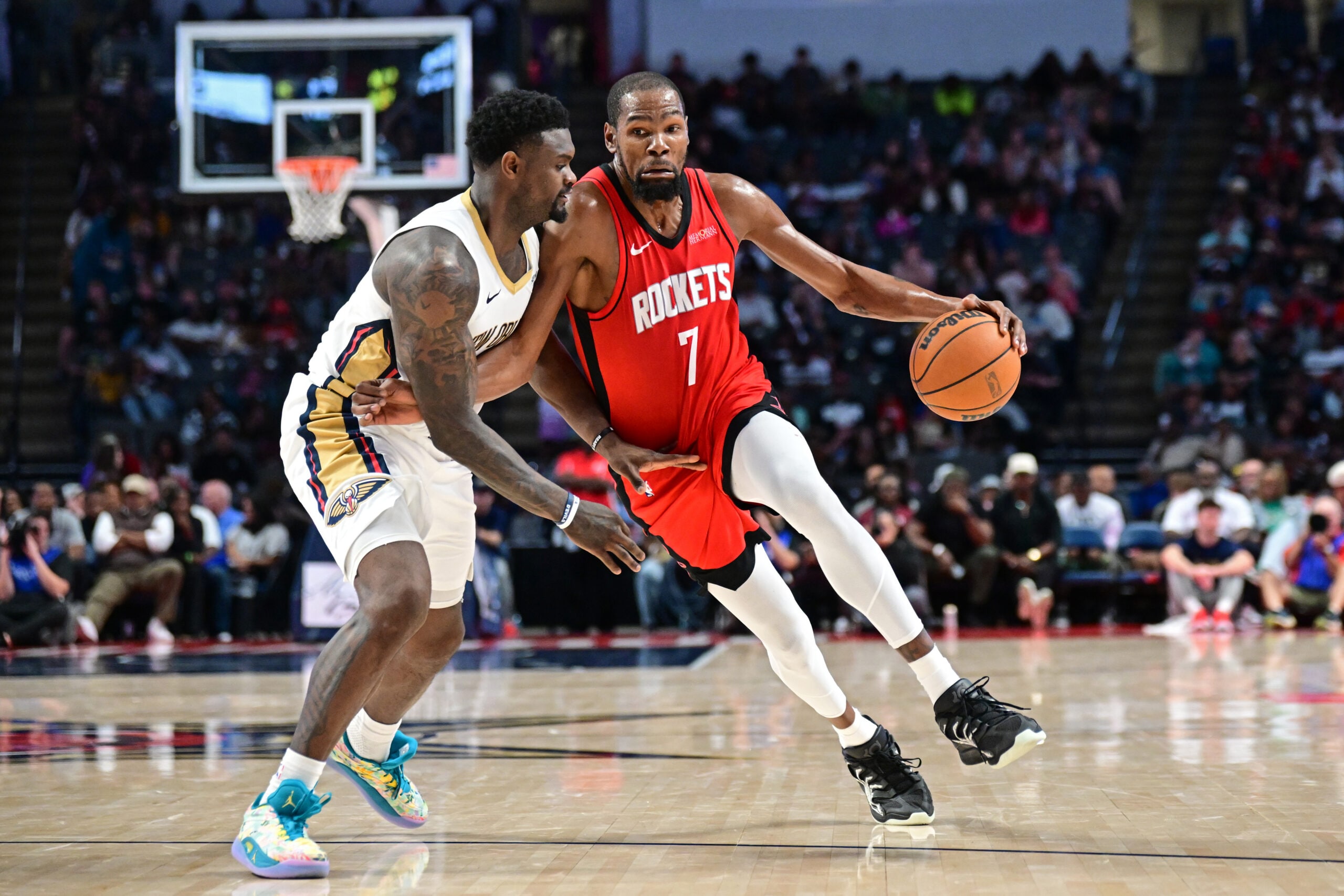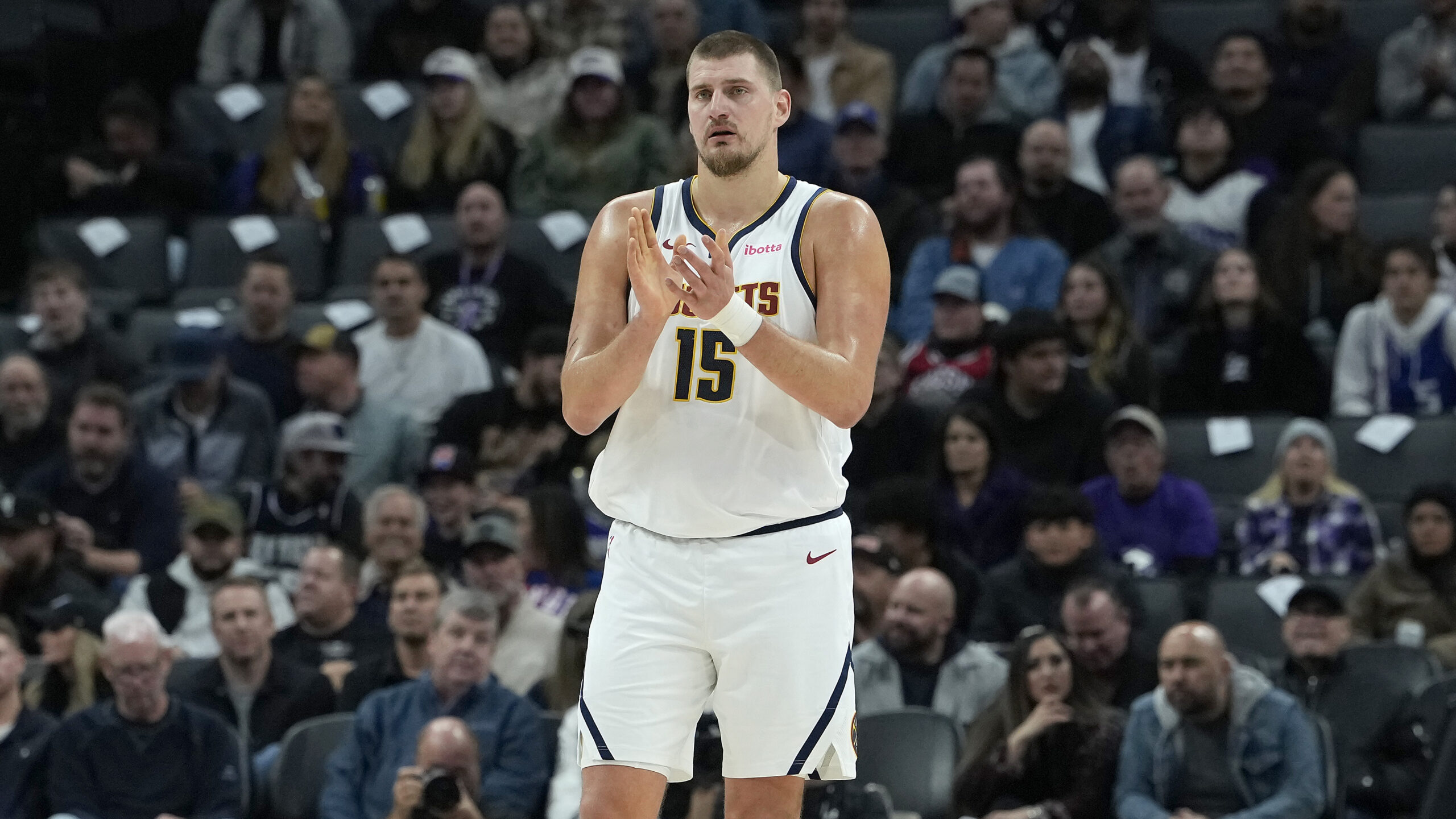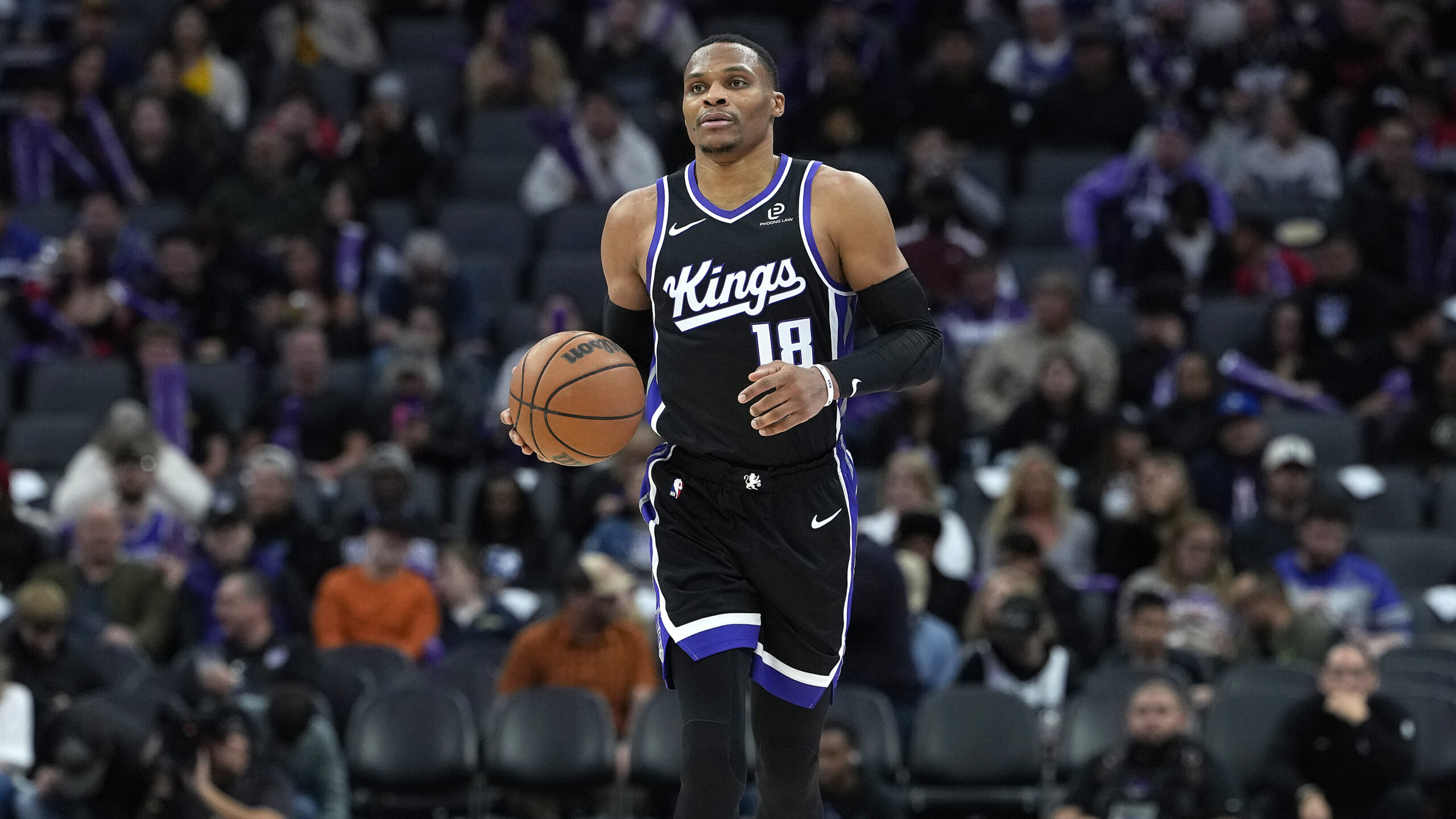
Three games into the Eastern Conference finals, the most memorable play of the series (no matter how you rank it historically) remains Bam Adebayo’s incredible block on Jayson Tatum’s drive in overtime of Game 1. That play is why this series is 2-1 in favor of the Miami Heat instead of the Boston Celtics after Boston’s 117-106 victory on Saturday.
The difference in Game 3, the reason why the Celtics aren’t down 3-0, was their 60-36 advantage in points in the paint. The league is shooting more 3-pointers every season (and more in these playoffs than it did in the regular season), but shots in the restricted area remain the most valuable on the floor. And the Celtics got there early and often to make this series interesting.
The Celtics 60 points in the paint were 10 more than they’d scored in any of their previous 13 playoff games and tied for the second most the Heat have allowed in regulation all season.
Critical in that attack, especially with that Game 1 block in mind, is that Adebayo was nowhere near the rim for the vast majority of the Celtics’ 21 baskets in the restricted area (video).
Low-volume rim protector
That block in Game 1 was spectacular, but Adebayo didn’t grade as an elite a rim protector in the regular season. Opponents shot 58.9% at the rim when he was there to protect it, a mark that ranked 27th among 79 players who defended at least 4.5 attempts at the rim per game.
That 58.9% was the best mark on the Heat, but for a starting big man, Adebayo didn’t protect the rim all that often. The 5.0 shots that he defended at the rim per 36 minutes on the floor ranked 62nd among 246 players who played at least 1,000 minutes this season. (For context, Celtics center Daniel Theis ranked ninth, defending 8.7 shots at the rim per 36.)
The low number is partly about the Heat preventing those shots in general. They ranked fourth in the (lowest) percentage of their opponents’ shots that came in the restricted area (29.6%). It’s partly because Adebayo played more than half (56%) of his minutes alongside another big (Meyers Leonard or Kelly Olynyk). And it’s partly because Adebayo switched a lot of screens so that he could shut down opposing guards.
The switching has had its benefits. According to Synergy play-type tracking, the Heat ranked third in points allowed per possession on isolations (0.82) in the regular season, with Adebayo defending the fifth most isolation possessions in the league (108). In the playoffs, opponents have scored just 0.64 points per possession on 33 isolations against the Heat’s center.
In Game 1, the Celtics isolated against Adebayo *seven times, and the results were not good. They scored just three points on those seven isolations in an otherwise efficient offensive game. In Game 2, they scored five points on *four isolations against him.
* These are different counts than those from Synergy above. They include isos that don’t end a possession.
On Saturday, the Celtics only tried playing one-on-one against Adebayo twice. Tatum drew a non-shooting foul on Adebayo early in the third quarter and then committed an offensive foul early in the fourth.
So it seems that, since Game 1, the Celtics have learned not to attack one particular defender. But they spent most of Game 3 attacking others, and Adebayo generally wasn’t in position to help.
Target acquired
Duncan Robinson hurt the Celtics in Game 2, shooting 6-for-12 from 3-point range in Miami’s five-point win. He was 4-for-8 from beyond the arc in Game 3, but the Celtics got a lot of those points back by targeting Robinson on the other end of the floor.
Here are some examples of them scoring against Robinson both off the dribble and in the post:
Play 1: On the Celtics’ third possession of the game, Tatum gets a screen from Daniel Theis and Adebayo stops his drive. He kicks the ball out to Jaylen Brown, who attacks Robinson off the dribble. Adebayo is in position to help, but just swipes at the ball and retreats to Tatum in the strong-side corner.
Play 2: Marcus Smart takes a hand-off from Tatum and gets a screen from Theis that Adebayo switches. Smart gets the ball back to Tatum on the left wing and he drives baseline. Because of the switch, it’s Jimmy Butler and not Adebayo protecting the rim.
Play 3: Brown contests a Robinson 3-pointer, leaks out, and establishes early position on Robinson under the basket. Tatum gets him the ball and he converts an and-one before Adebayo can get there.
Play 4: Adebayo switches another Smart-Theis screen and Tatum again attacks Robinson along the left baseline. Robinson cuts off the drive, but Tatum turns it into a post-up and draws a foul on a drop step with Adebayo remaining on the perimeter.
Play 5: With Adebayo off the floor, the Celtics run their double-drag screen for Kemba Walker and the Heat switch both screens, putting Robinson on Smart. He takes Robinson into the post and gets another and-one on a turn into the lane.
Play 6: With Adebayo still off the floor, Robinson switches a hand-off from Smart to Walker, who initially gives up the ball. But Tatum gets it right back to him and Walker easily beats Robinson off the dribble.
Robinson didn’t get burned every time the Heat went after him – he actually blocked Tatum on the first possession of the third quarter – but the Celtics will continue to challenge him defensively. In addition to getting layups, they’re getting fouls (he has 10 in 77 minutes), which can take away one of Miami’s weapons on the other end of the floor.
Bam outside, Celtics inside
Four of the Celtics’ 21 restricted area buckets (including the last two above) came with Adebayo off the floor, and another five came on fast breaks. But the other 12, including each of the Celtics eight restricted-area buckets in the first quarter, came in the half-court with Adebayo on the floor. And on only two of those 12 – a Brown cut against the Heat’s 2-3 zone where Jae Crowder wasn’t guarding anybody and a Smart drive that he didn’t contest – was Adebayo in position to protect the rim.
Here are some more Boston layups that Adebayo couldn’t get to:
Play 1: The Celtics ran the same play – Smart taking a hand-off from Walker and using a screen from Brown – on their first two possessions of the game. Both times, Adebayo was guarding Theis, who was stationed in the right corner. On the first possession, Smart beat Crowder off the dribble for an and-one. Here, he hits Brown rolling to the rim, with Goran Dragic helping off of Walker instead of Adebayo helping off Theis.
Play 2: Walker brings the ball up the left side of the floor in transition. Adebayo is around, but doesn’t get all the way back to wall off the paint and just swipes at the ball when Walker beats Crowder off the dribble.
Play 3: Robinson and Dragic don’t switch an exchange between the Celtics’ two guards, but Adebayo switches Theis’ screen for Walker. Crowder alertly switches onto Theis when he dives into the paint and Butler stops Brown’s first drive. But when Brown spins away from a Robinson switch and drives again, Crowder steps up and, with Adebayo still outside the paint, Theis is able to tip-in the miss.
Play 4: Adebayo again switches a Walker-Theis screen, Walker again quickly gets rid of the ball, and Crowder again leaves his man to get Dragic off of Theis. Robinson forces a tough shot from Smart, but Theis again gets position for a put-back.
Play 5: With Olynyk on the floor and guarding Theis, Adebayo has Brown in the right corner. Walker gets Brown the ball, but he knows there’s a better matchup elsewhere. Tatum backs down Tyler Herro and gets an easy layup with Adebayo watching from a few feet away.
More effort, fewer switches?
Some of this stuff can be cleaned up with better effort from the Heat defense, which will have three days to soak this one up and build up the requisite energy and focus needed for Game 4 on Wednesday (8:30 p.m. ET, ESPN).
“Lacking communication,” Adebayo said of his team’s performance in Game 3. “This is a series where you have to guard your yard. Sixty points in the paint is not guarding our yard.”
But the Heat might also be better off if Adebayo didn’t switch so often. It’s great that he can guard “one through five” and a lot of perimeter players in this league have learned the hard way that he can shut anybody down in isolation.
But his ability (and eagerness) to switch onto guards can put the Heat in bad situations elsewhere on the floor, and it seems that the Celtics have figured that out. If Adebayo is on the perimeter, they can attack the Heat’s weaker defenders, and he won’t be at the rim to protect it.
“We just got to stay in front of our man,” Butler said about the Celtics’ 60 points in the paint on Saturday. “Simple as that. I think we put too much on Bam to always be there, and he can’t save us every single time. He’s great at help defense and he’s great on the ball but he already does enough for us. You can’t just get beat and expect for Bam to come and save you every time.”
Theis is 4-for-24 from 3-point range in the playoffs. If he’s stationed on the perimeter, Adebayo (if he’s actually guarding Theis) can sag off and be in better position to protect the rim. If Theis is stationed inside, the paint will be crowded and it will be more difficult for the Celtics’ perimeter players to drive.
Choosing not to switch means choosing between a softer (drop) coverage or an aggressive (blitz) one on pick-and-rolls. Dropping back means allowing the league’s best pull-up jump shooting team to shoot pull-up jumpers. Blitzing means leaving yourself open to 4-on-3 situations behind the pick-and-roll. The Heat generally blitz when Olynyk is playing center and Walker has handled double-teams well, but Adebayo would be quicker to recover back to his man than Olynyk is.
Playing zone is the easiest way to keep Adebayo closer to the basket. But the two zone scores noted above were part of a third quarter where Boston scored 13 points on seven zone possessions, easily their best stretch against it in the series. Through three games, the Celtics have still been less efficient against the zone (1.05 points per possession) than they’ve been otherwise (1.15). It will return, but maybe not for as much as we saw in Game 2 (27 second-half possessions).
No matter what defense they’re playing against, the Celtics saw the benefits of being aggressive in Game 3.
“I think we should play like that all the time,” Tatum said, “like we’re fighting for our lives. And we realize that.”
They’re going to keep attacking the rim. The question is whether Bam Adebayo will be there to protect it.
* * *
John Schuhmann is a senior stats analyst for NBA.com. You can e-mail him here, find his archive here and follow him on Twitter.
The views on this page do not necessarily reflect the views of the NBA, its clubs or Turner Broadcasting.










